Top 10 Weirdest And Most Amazing Flowers On Earth
| Summary |
The world of flowers is a fascinating and varied realm, brimming with stunning beauty, vibrant colors, and delightful fragrances. With their enchanting allure, flowers have captivated humans for centuries, from the delicate petals of the rose to the exotic blooms of the orchid.
Every flower possesses a distinct history, symbolism, and significance that contributes to its captivating allure. Flowers have always held a significant place in human culture, being used in various ways such as in celebrations, ceremonies, or as symbols of love and friendship.
These incredible flowers are not only visually stunning, but also possess captivating stories and symbolism. Every single one of these flowers possesses distinct traits that distinguish them from others, rendering them truly exceptional in the realm of plants. With their delicate petals and vibrant colors, these flowers have captivated people worldwide for centuries. The lotus flower, symbolizing purity and enlightenment, and the orchid, known for its exotic beauty and elegance, have always been sources of inspiration and fascination.
Just as a biologist would appreciate, these flowers have captivated our hearts and continue to evoke awe and admiration, whether they are cherished for their healing properties or as symbols of affection and loyalty.
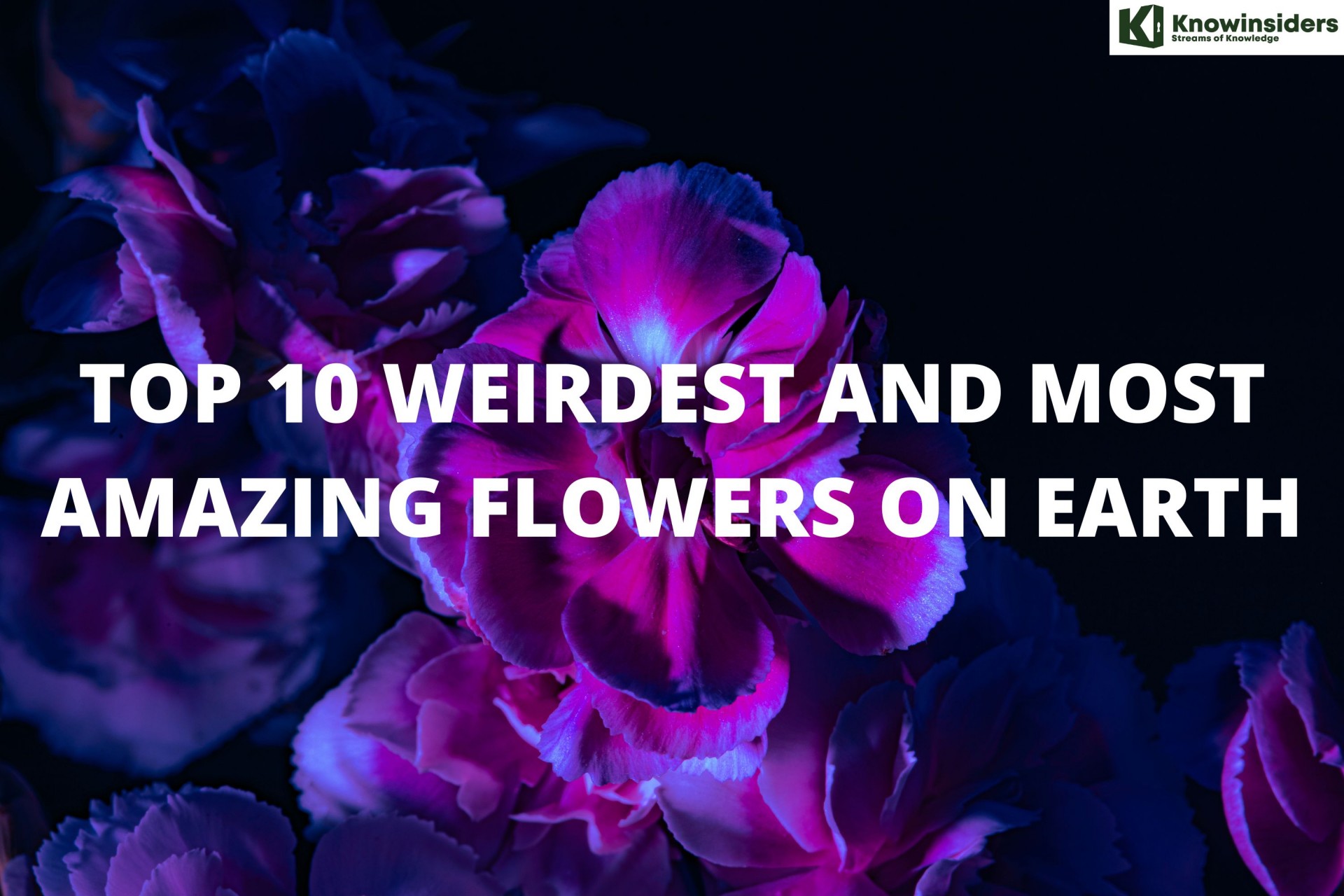 |
| Top 10 Weirdest And Most Amazing Flowers On Earth |
The History And Significance Of Flowers
All through human civilization, flowers have been very important to culture and history. Flowers have been a part of many customs, ceremonies, and rituals from antiquity on. Flower symbols for love, beauty, and purity are found in many cultures. Gifts expressing feelings of love, sympathy, or gratitude are frequently given of them.
Flora has also been used historically in literature and art. A great deal of well-known painters have used flowers to express various feelings and meanings in their works. Poets and authors have been influenced by flowers to write exquisite poetry that honors their beauty and meaning.
All things considered, there is a great deal of symbolism and importance to flowers that cuts over time and cultural boundaries. Their fragrance and beauty still enthrall people everywhere.
Top 10 Weirdest And Most Amazing Flowers On Earth
1. Corpse Flower (Amorphophallus titanum)
 |
| Corpse Flower |
Origin: Sumatra, Indonesia
This rare flower, which Italian botanist Odoardo Beccari first discovered in 1878, has been a fixture in botanical gardens all over the world and draws sizable crowds whenever it blooms.
Scientifically called Amorphophallus titanium, the Corpse Flower is a botanical wonder well-known for its enormous size and notorious smell. This unusual plant, which is native to the Sumatra rainforests, gets its name from the strong scent it gives off when in bloom—something like the smell of decaying flesh. Its unusual and spectacular flowering event enthralls botanists, aficionados, and curious onlookers alike despite its disagreeable smell.
Rising up to ten feet tall, the Corpse Flower is one of the biggest flowering structures in the world. Its foul-smelling inflorescence, which resembles a massive burgundy-hued funnel, draws flies and carrion beetles, among other pollinators. Even with its ominous name, seeing a Corpse Flower in bloom is an amazing sight that highlights the diversity of nature.
2. Rafflesia Arnoldii
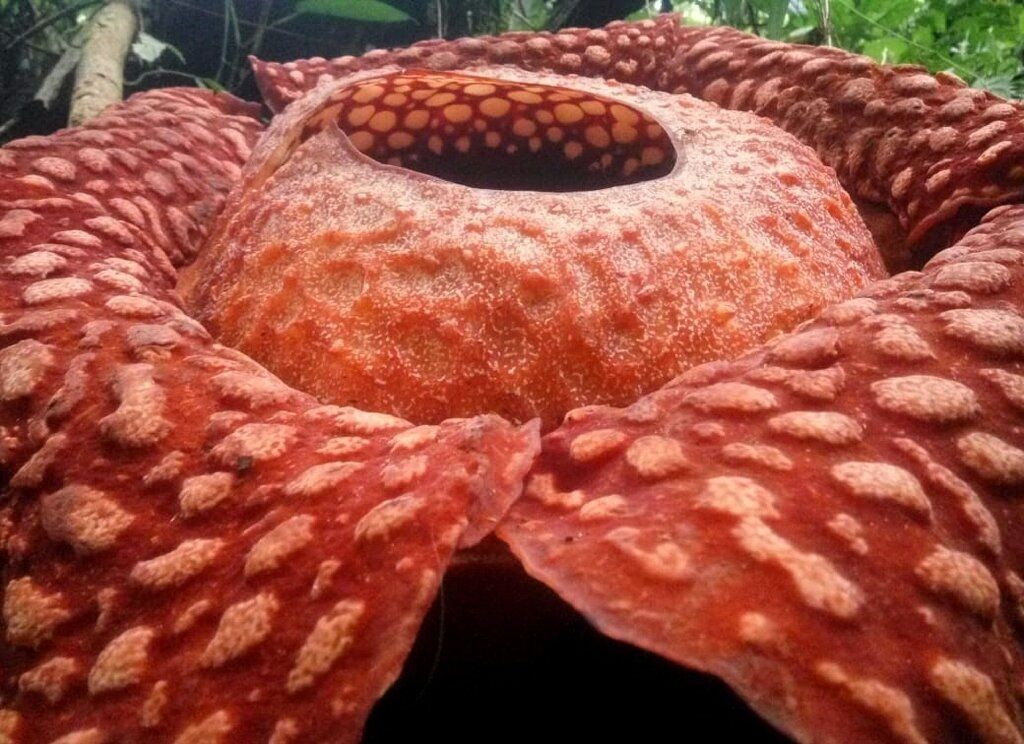 |
| Rafflesia Arnoldii |
Origin: Southeast Asia
History: It was first found in the Indonesian rain forest by a guide working for Dr. Joseph Arnold in 1821, and named after Sir Stamford Raffles, the leader of the expedition.
Native to Southeast Asian rainforests, Rafflesia Arnoldii, sometimes known as the "corpse lily," is a parasitic plant. Known as the biggest flower on Earth per se, this botanical behemoth can weigh up to 15 pounds and have diameters of more than three feet. But Rafflesia Arnoldii's enormous size is not its only claim to fame; it is also known as the "corpse flower" because of its disgusting odor, which is evocative of decaying flesh.
The flower draws carrion flies despite its bad odor, which help pollinate it. The peculiar way that Rafflesia Arnoldii lives—parasitizing some vines for nutrients and only occasionally producing its enormous blooms—adds to its charm and mystery.
3. Bee Orchid (Ophrys apifera)
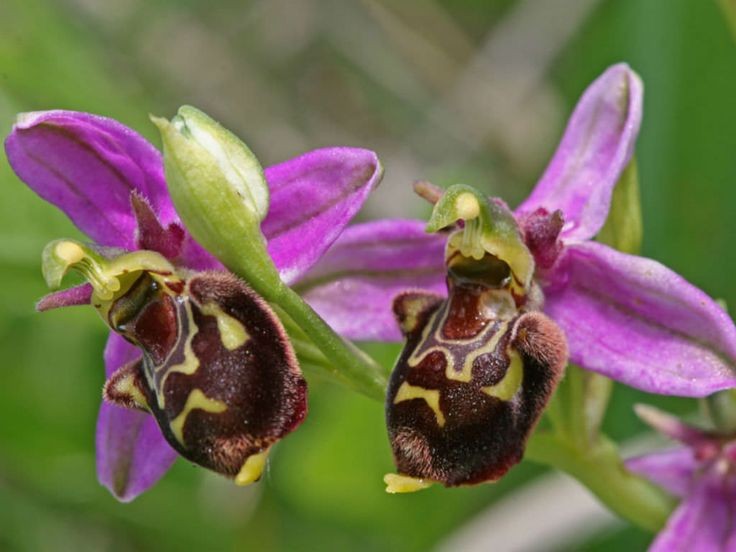 |
| Bee Orchid |
Origin: Europe
History: The Bee Orchid has adapted to trick male bees, a process known as pseudo-copulation, ensuring its survival in areas with scarce bee populations.
The Bee Orchid, scientifically known as Ophrys apifera, is a fascinating and intriguing member of the orchid family. This orchid species is native to Europe, the Mediterranean region, and parts of Asia. It has developed a fascinating strategy to guarantee its pollination. The flowers of the Bee Orchid closely resemble female bees, displaying intricate patterns and emitting a scent that mimics the pheromones of the insect.
With its cunning mimicry, it entices male bees into thinking it's a potential mate, leading them to unknowingly pollinate the flower. The fascinating adaptation of the Bee Orchid highlights the extraordinary measures that plants take to guarantee their reproductive success, emphasizing the intricate relationship between plants and animals in the natural world.
4. Dancing Girls (Impatiens bequaertii)
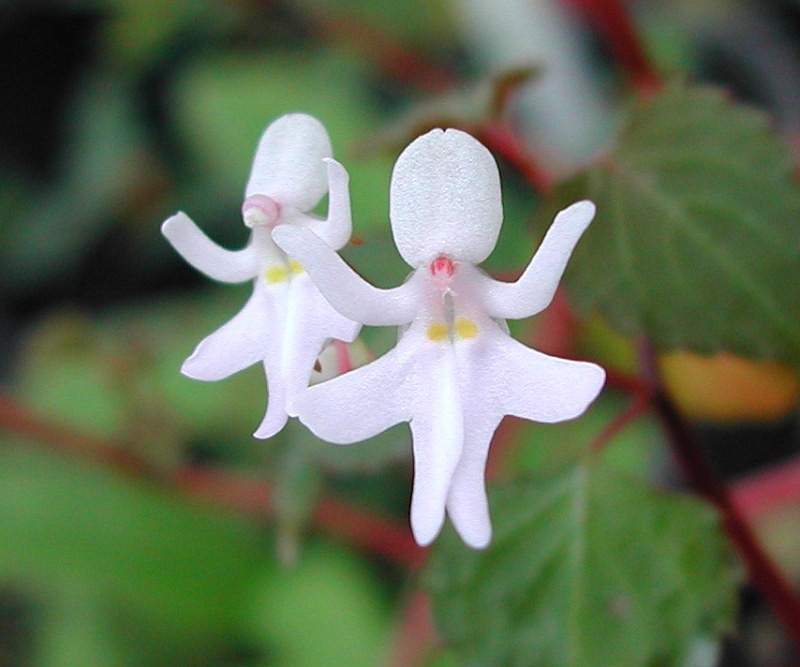 |
| Dancing Girls (Impatiens bequaertii) |
Origin: East Africa
History: Discovered in the early 20th century, Dancing Girls thrive in the humid, shadowy environments of East Africa, making them challenging to cultivate elsewhere.
Impatiens bequaertii, also known as the Dancing Girls, is a fascinating and visually stunning species of flowering plant that originates from the Democratic Republic of the Congo. This plant stands out due to its distinctive floral display, reminiscent of a group of tiny dancers dressed in colorful costumes. The flower showcases a slender, elongated lip that gracefully curls upwards, resembling the outstretched arms of a dancer, while the rest of the bloom imitates a flowing skirt.
The vibrant hues of the flowers, spanning a spectrum of pinks, corals, and oranges, enhance their irresistible charm. Discovered in the cool depths of the rainforest, the Dancing Girls bring a burst of color to their environment with their playful appearance, captivating anyone lucky enough to come across them.
5. Swaddled Babies (Anguloa uniflora)
 |
| Swaddled Babies (Anguloa uniflora) |
Origin: Andes Mountains, Colombia
History: Discovered in the late 18th century, Swaddled Babies have captivated orchid enthusiasts with their unusual and tender appearance.
Anguloa uniflora, also known as the Swaddled Babies orchid, is a fascinating and unique species that is found in the cloud forests of Colombia, Ecuador, and Peru. The Swaddled Babies orchid produces flowers that closely resemble bundled infants nestled within blankets, staying true to its nickname. The flower's petals have a distinctive shape and coloration, curving and folding around the central column. This gives the impression of a newborn being gently cradled in swaddling cloth.
This fascinating floral mimicry is not only visually captivating but also serves a practical purpose, luring pollinators like bees and moths to guarantee the plant's reproductive success. The Swaddled Babies orchid is a remarkable example of nature's endless ingenuity and variety, captivating onlookers with its enchanting and evocative flowers.
Read More: Top 10 Most Beautiful Summer Flowers to Show Your Feelings & Emotions
6. Hooker’s Lips (Psychotria elata)
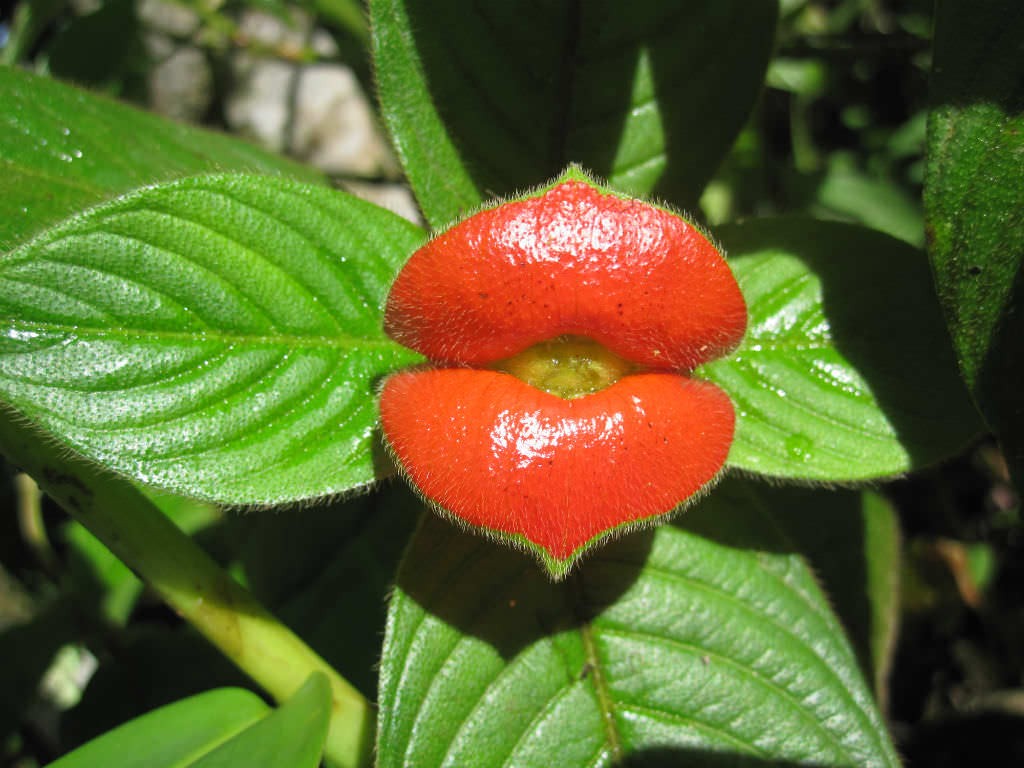 |
| Hooker’s Lips (Psychotria elata) |
Origin: Central and South America
History: Known to attract hummingbirds and butterflies, its distinct shape has also made it a target for overharvesting by plant collectors.
Psychotria elata, also known as Hooker's Lips, is a tropical plant that is found in the rainforests of Central and South America. The captivating species captures the eye with its distinctively shaped flowers, resembling vibrant, crimson lips poised for a tender kiss. Similar to a biologist, one can appreciate the visually captivating floral display, which not only serves an aesthetic purpose but also plays a vital role in attracting pollinators like hummingbirds and butterflies.
With its vibrant red bracts and inconspicuous flowers, Hooker's Lips stands out among the lush foliage of the rainforest floor. With its unique and fascinating floral structure, this plant has captured the attention of biologists, photographers, and nature lovers alike, bringing a sense of wonder to the already diverse world of tropical plants.
7. Skeleton Flower (Diphylleia grayi)
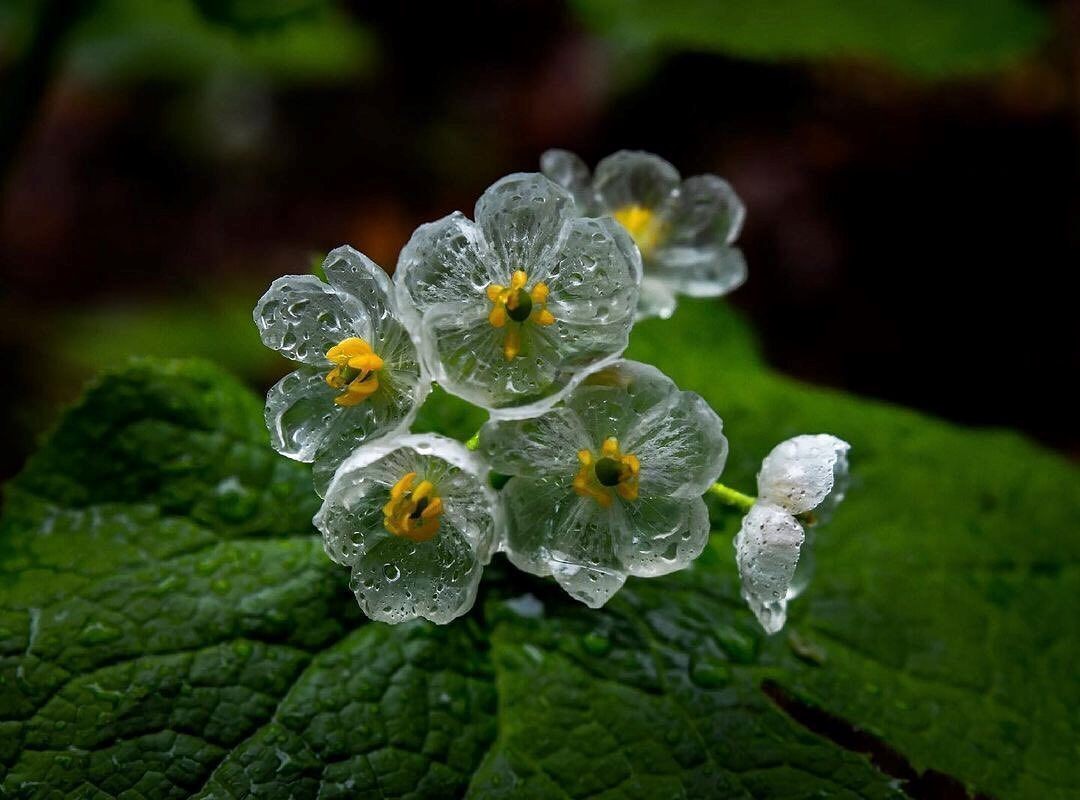 |
| Skeleton Flower (Diphylleia grayi) |
Origin: Eastern United States and Asia
History: Growing in colder, wooded mountainous regions, this perennial is known for its delicate beauty and ethereal transformation in the rain.
This exquisite plant, known as Diphylleia grayi or the Skeleton Flower, thrives in the lush woodlands of Japan and China. This species possesses a truly remarkable capability to undergo a captivating metamorphosis upon contact with water. When raindrops or dew collect on the surface of its white petals, they turn translucent, unveiling the intricate network of veins underneath, creating a delicate, skeletal look for the flower.
With its fleeting allure, the Skeleton Flower enchants onlookers, adding to its enigmatic charm. The plant not only has a beautiful appearance, but it also carries great cultural importance in the areas where it naturally grows. It is highly respected for its symbolic meaning of purity, rejuvenation, and the fleetingness of life.
8. Monkey Orchid (Dracula simia)
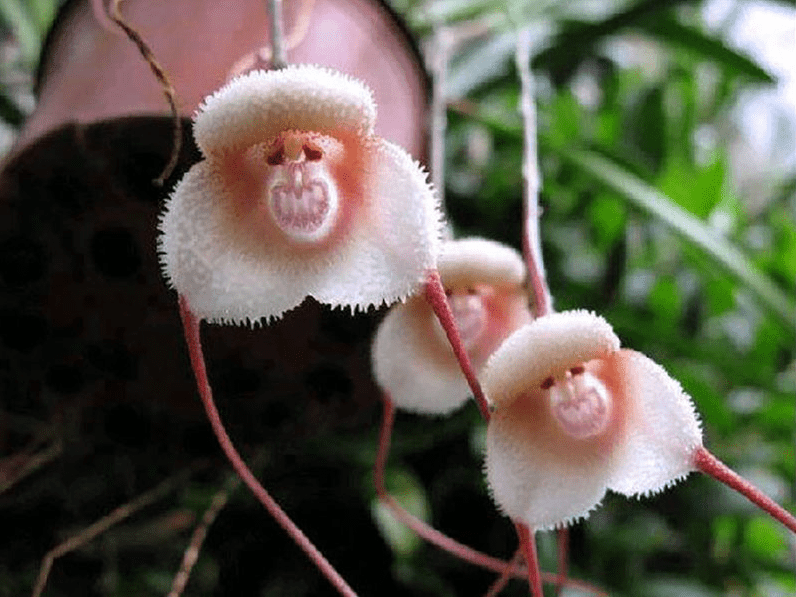 |
| Monkey Orchid (Dracula simia) |
Origin: Ecuador and Peru
History: Discovered relatively recently, it has gained popularity for its quirky monkey face-like appearance.
The Monkey Orchid, scientifically known as Dracula simia, is an intriguing species of orchid that can be found in the cloud forests of Ecuador and Peru. This orchid species is known for its striking resemblance to the face of a monkey, complete with a prominent nose and mouth. It never fails to captivate the imagination of those who come across it. The Monkey Orchid's blooms have an intricate floral structure and coloration that closely resemble the facial features of a primate, which is why it has earned its playful moniker.
With its enchanting appearance, this orchid serves a vital role in luring pollinators like bees and butterflies. The Monkey Orchid is a remarkable example of the vast range of orchids and the fascinating ways in which nature designs captivating flowers.
9. Parrot Flower (Impatiens psittacina)
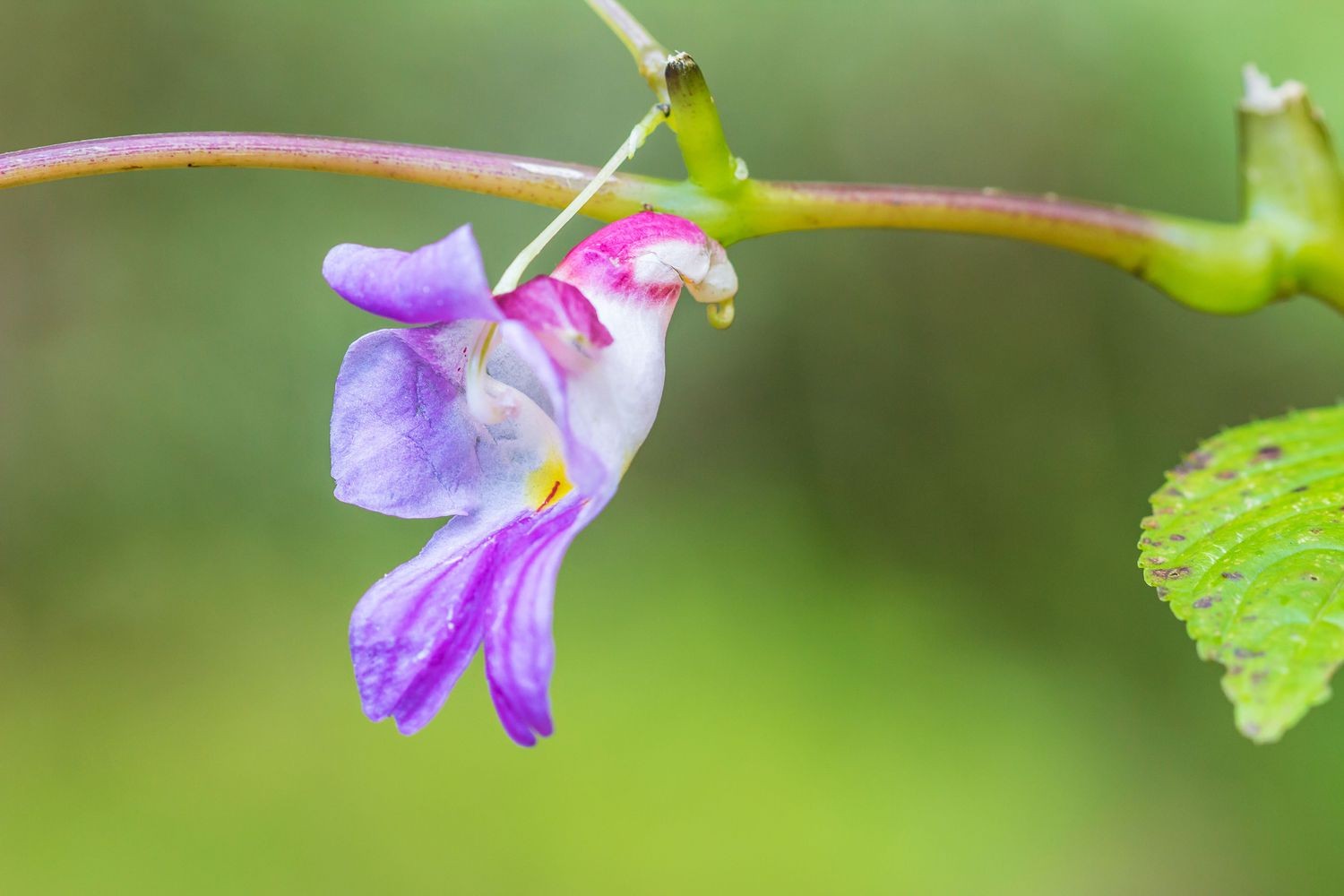 |
| Parrot Flower (Impatiens psittacina) |
Origin: Thailand, Burma, and parts of India
History: Discovered in 1899, the Parrot Flower is rare and subject to legal protection due to its uniqueness and rarity.
The Parrot Flower is an absolutely breathtaking species of impatiens that can be found in its natural habitat in Thailand and Myanmar. This plant's flowers closely resemble the head of a parrot, with vibrant colors and petal patterns that resemble plumage. With its striking colors and distinct flower structure, the Parrot Flower truly stands out in its native environment.
Just as a biologist would observe, pollinators like bees and butterflies are naturally drawn to the sweet nectar of flowers, playing a crucial role in the reproductive process. With its captivating appearance, the Parrot Flower has become a highly sought-after ornamental plant in gardens and collections around the world. Wherever it blooms, it adds a touch of exotic beauty that is simply irresistible.
10. Bat Plant (Tacca chantrieri)
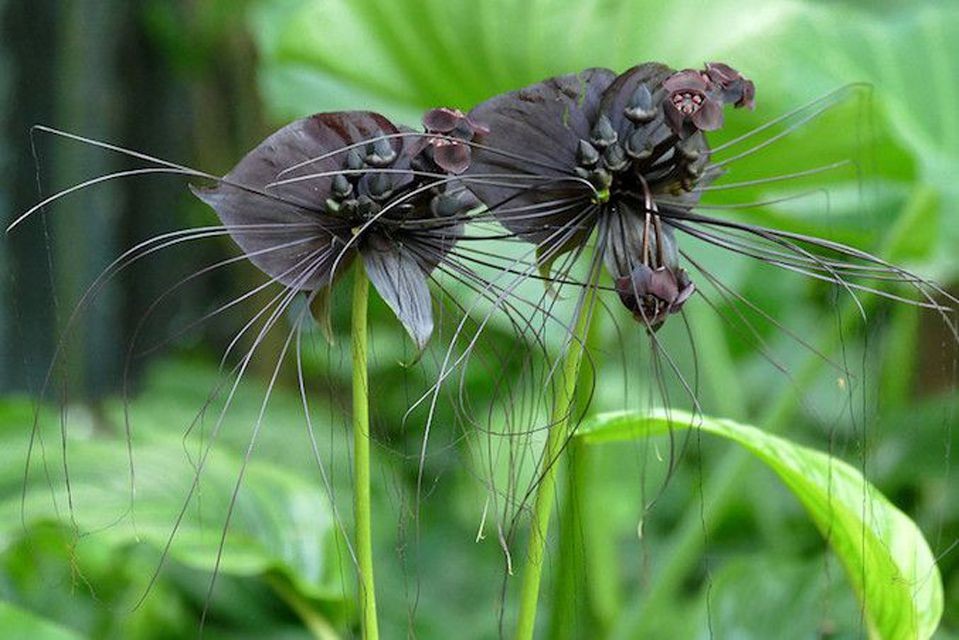 |
| Bat Plant (Tacca chantrieri) |
Origin: Asia
History: Valued in horticulture for its dramatic appearance, it is used in various Asian cultures for its supposed medicinal properties.
This intriguing species, native to Southeast Asia, is commonly known as the Bat Plant or Devil's Whiskers - a captivating name for a captivating plant. This remarkable plant is famous for its unique flowers that bear a striking resemblance to the face of a bat, complete with long, dark "whiskers" extending from the center. With its intricate floral structure and striking dark purplish-black coloration, the Bat Plant possesses an otherworldly appearance that never fails to captivate those who come across it.
With its fascinating appearance, the plant serves a crucial role in luring pollinators like moths and bats through its delightful scent and nectar-filled flowers. The distinctive appearance and fascinating reproductive strategy of the Bat Plant have made it a highly sought-after specimen in botanical gardens and collections, captivating and inspiring admiration.
Conclusion
Every one of the ten most magnificent flowers on earth has an individual personality and an intriguing past. Every flower, from the vivid hues of the rainbow rose to the complex designs of the orchid, has a tale just waiting to be told. Examining their ancestors shows how these flowers have changed throughout time, adjusting to their surroundings and acquiring distinctive qualities that set them apart in the botanical world.
Every blossom, whether it be the delicate beauty of the cherry blossom or the age-old symbolism of the lotus flower, has a story to tell. Investigating these traits and beginnings helps us to understand these natural treasures better and to learn the secrets that make them genuinely remarkable.
 Top 10 Rarest Flowers Are Almost Extinct in the Wild Top 10 Rarest Flowers Are Almost Extinct in the Wild There are thousands of flowers in the world, yet some flowers are so rare, bloom in specific seasons, or even after decades. Check out right ... |
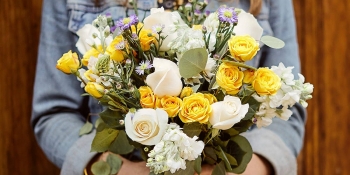 How to Keep Flower Fresh With 9 Simple Tips How to Keep Flower Fresh With 9 Simple Tips Everybody loves fresh flowers. They bring colour and life to your space, add a nice touch to any room, and make the perfect gift for ... |
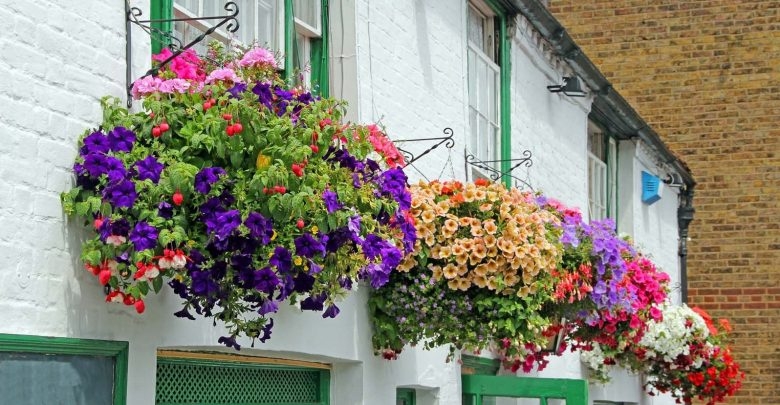 What Are The Most Beautiful Flowers For Balcony Garden What Are The Most Beautiful Flowers For Balcony Garden Your balcony can look brighter if you decorate it with flowers. This list will give you a recommendation on ... |
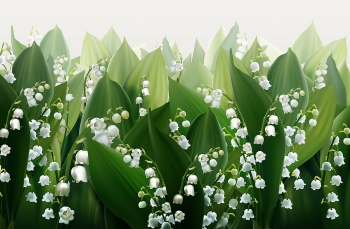 Little-Known Facts: Lily of the Valley Flower Little-Known Facts: Lily of the Valley Flower Lily of the valley is a flowering plant and one of the most sought after flowers for its sweet scent and delicate bell like petals ... |


























